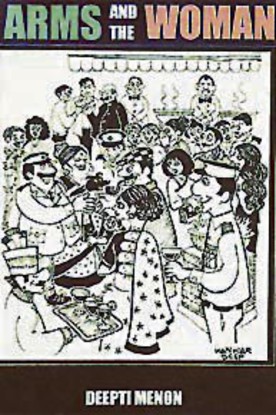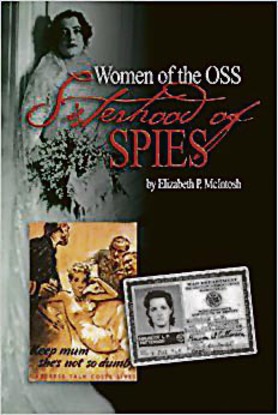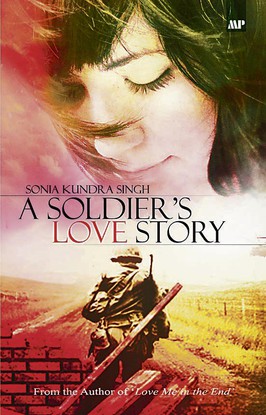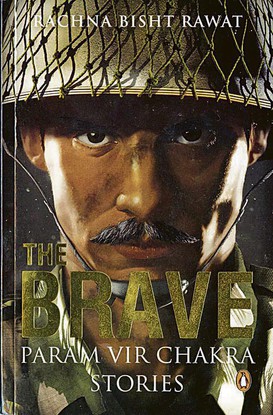There are paeans dedicated to Indian Armymen, but their wives remain the unsung heroes. A handful of books take in their perspective and examine their stories









Aradhika Sharma
While taking oath, a soldier swears that he will bear true faith and allegiance to the Constitution and honestly and dutifully protect the country, even to the peril of his life, there is an unwritten oath that the woman who weds an armyman takes as well. They pledge to commit to a life of constant ‘postings’, long separations and fears and non-salubrious climes and living quarters. No wonder, most army wives are pragmatic and have developed a sense of acceptance and humour. These women have their own code of conduct — almost as strict as that of their husbands. There are protocols in place that must be adhered to at all times. So while the Army marches ahead with its rank and file; spit and polish; cavalry, artillery, infantry et al, the indomitable ladies do their part by committing to the lives they have chosen to live, representing the softer side of an establishment that is essentially warlike. While some of these ladies have penned down their personal experiences, others have given journalistic and historical accounts in the form of books and articles. All of these works examine different angles of domestic and social lives of soldiers and their spouses and provide a significant sociological commentary on one of the most important institutions of society down the ages. The British Victorian ladies, who came to India in the halcyon days of the Raj, chronicled the lives in those times in the forms of sketches and letters. Though not an army wife Emily Eden (sister of Governor General George Auckland) wrote Up the Country: Letters From the Upper Provinces of India in 1867 . This is a collection of letters that Emily wrote to her sister Fanny. Emily’s wry and caustic style has been compared to that of Jane Austen. Her travels provide insights into the life at the top as well as her brother’s catastrophic policy in Afghanistan.A comparatively modern work on the lives of the Indian Army wives is The Memsahibs: The Women of Victorian India by Pat Barr (1979). It is a wonderfully witty account of British women who came to India as soldiers’ wives, fiancés and sisters in the 19th century and set up a sub culture that the ‘brown memsahibs’ (up to an extent) follow till date. Pat Barr established a reputation for herself as a popular historian. Award-winning journalist Tanya Biank wrote Under the Sabers (2006) and Army Wives (2007). Both books explore the unwritten, complex codes of military marriages. Western literature is overflowing with novels, stories, handbooks, how-to books by army wives. Some of the titles by the western authors are: Homefront Club: The Hardheaded Woman’s Guide to Raising a Military Family. It examines the actualities and challenges of being married to a military man, “from keeping a marriage together and raising good kids to maintaining some semblance of normalcy.”Portraits of the Toughest Job in the Army: Voices and Faces of Modern Army Wives by Janelle H. Mock, who explains, “It’s hard to explain to people that your husband wants to go to war, but he does. He wants the experience. That is what he is trained to do.” Today’s Military Wife by Lydia Sloan Cline is a handbook on how a wife can prosper in a service milieu. She gives information on family-friendly programmes, coping with periodic separations, managing a separate career, living overseas, raising a family, while fully participating in the military social life. Faith Deployed: Daily Encouragement for Military Wives by Jocelyn Green is a ‘collection of devotions that addresses the challenges wives face when their husbands are away protecting freedom.’There’s even A Family’s Guide to the Military for Dummies by Sheryl Garrett and Sue Hoppin and Married to the Military: A Survival Guide for Military Wives, Girlfriends and Women in Uniform by Meredith Leyva (founder of CinHouse.com, a community for army spouses). Surprisingly, Indian Army wives haven’t been writing much. Although some brave better halves have ventured into the field of literature, this category of publication is sadly in the deficit. Fin Feather and Field by Simren Kaur (also the author of childrens’ books: Ladakh: Mountains of Adventure, Mystery of the Missing Relic) is the account of 40 years of her life in the armed forces with her husband. A Soldier’s Love Story by Sonia Kundra Singh (an army officer’s wife) is more about a traumatic love tale than an account of the army life. Soldier and Spice: An Army Wife’s Life by Aditi Mathur Kumar is another foray by an army wife into writing novels. It is the story of Pia who gets married to an army officer Arjun. After she gets married regular life is a thing of the past. She is now an army wife, a memsahib. Considering that the Indian Army is one of the largest in the world, surely there is space for recounting the complex personal challenges of keeping your love alive during deployments, adjusting to constant moves, understanding how to maximise the salaries and benefits, juggling your own career and kids and the confusing protocols and roles demanded by the institution. 

